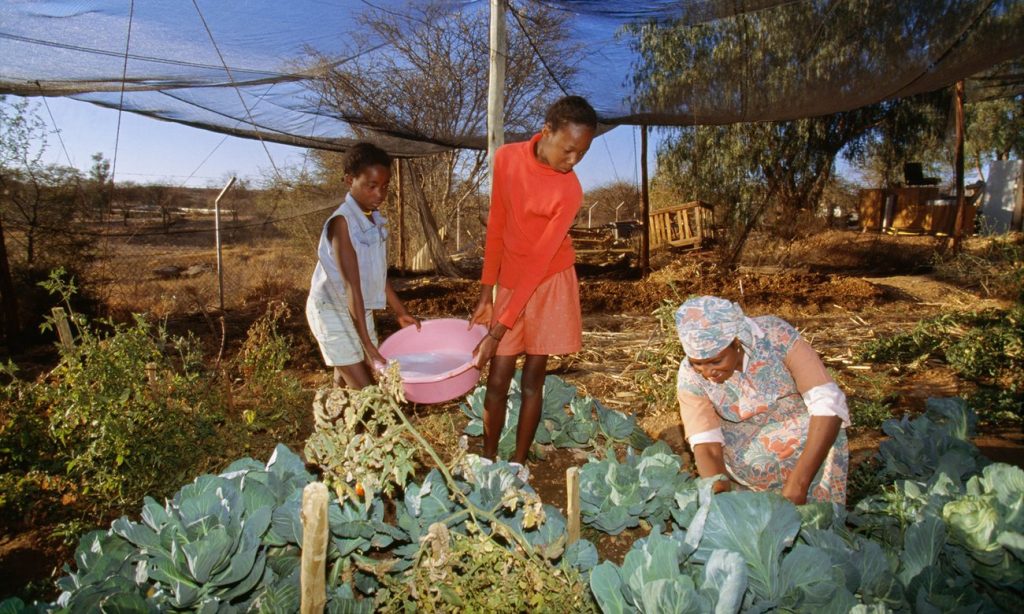
Photograph: Alamy Stock Photo
Two weeks ago, the President of Namibia officially declared the country to be in a state of emergency. The country is facing its most severe drought in more than 25 years. In rural areas, crops are failing and livestock is dying. Just as destructive is the impact the drought is having on people in towns and cities.
Coca-Cola, for example, which employs 815 people in Namibia, recently decided to stop producing all canned drinks in the country and instead import them from South Africa. The company has two plants in Namibia – one in the capital, Windhoek, and another in the town of Oshakati in the far north. Frik Oosthuizen, head of Coca-Cola in Namibia, said the decision to stop producing canned drinks was “a direct result of the water crisis”.
Meat exporter Meatco has also scaled back production, citing the country’s drought as the direct cause of the temporary closure of its plant in the city of Okahandja due to the low number of available cattle.
And things could get worse, according to Bärbel Kirchner, CEO of the Construction Industries Federation, who warns that the water crisis could put 40,000 construction jobs and as many as 400,000 indirect jobs – everyone from suppliers to the women making a living cooking at construction sites – at risk across Namibia due to the water-intensive nature of the construction industry.
In Windhoek, authorities have ordered businesses to cut water use by 30%, a move affecting small and micro businesses along with big companies.
“We don’t wash gents’ hair any more, but we can’t send a female customer getting a dye job home without washing her hair,” says Michelle Bergmann, a hairdresser in an upmarket salon in one of Windhoek’s main shopping malls. “We’re worried because that is our main source of income.”
Across town from Bergmann’s salon in the sprawling Okuruyangava township, Aacio Haimomo explains that his small car-wash business has invested in water-frugal machines that use less than half a bucket of water per car. “It’s difficult … This is the primary source of income for myself and my [four] workers,” he says.
In addition to the 30% cut in water use for businesses, Windhoek residents have been asked to limit daily water usage to no more than 90 litres per person, and restrictions such as a ban on hosepipes for washing cars or watering gardens have been in place since late March.
But this might not be enough. “Extreme measures to save water will be needed to make it to the next rainy season [in January],” says Willem Venter, head of planning and resource management at national utility company NamWater.
According to Venter, an urgent investment of $1.58bn is needed from the state to secure Windhoek’s water supply by finding new sources to tap while upgrading run-down infrastructure in the city. But finding that extra money will be difficult if not impossible under tough economic conditions brought about by the collapse in international mineral commodity prices.
In 2012, geologists discovered a vast underground lake stretching deep under the northern Ohangwena region, around 800km north of Windhoek. Fed by underground sources from Angola, it could become an additional water source for north-central and central Namibia once tested for human suitability and sustainability, says veteran geo-hydrologist Frank Bockmühl. But the government only recently started drilling more exploratory boreholes, and it could take another five to 10 years to tap this resource, he adds.
Some businesses are starting to address the drought head-on. Several construction industry companies, including HH Schultz Construction, have started using only recycled, grey water for large-scale construction. But smaller firms do not have access to large water tankers and can’t afford the extra costs, says Kirchner.
Social media has been particularly effective in targeting companies seen to be using water irresponsibly. Any wasting of water is promptly reported to online local groups such as Facebook group Water Wise Windhoek, run by environmental scientist Theo Wassenaar. A local hotel, the Avani Sands, for example, was shamed first on social media and then in print in the daily Namibian newspaper Die Republikein into firing their cleaning contractors for using clean water to wash the car park.
But as Namibia’s water crisis continues, political faultlines are opening up. Local artists have started a “Don’t Wash Me” campaign to discourage people from washing their cars – an important social status symbol in Namibia – by creating art on unwashed windscreens and running a media campaign to increase awareness.
The water-saving campaign has angered the likes of Haimomo, who makes a livelihood from the very thing that the artists are campaigning against. “Most of the people whose cars we wash here are from the rich suburbs,” he says. “Maybe [we] should go get our water from their houses.”

